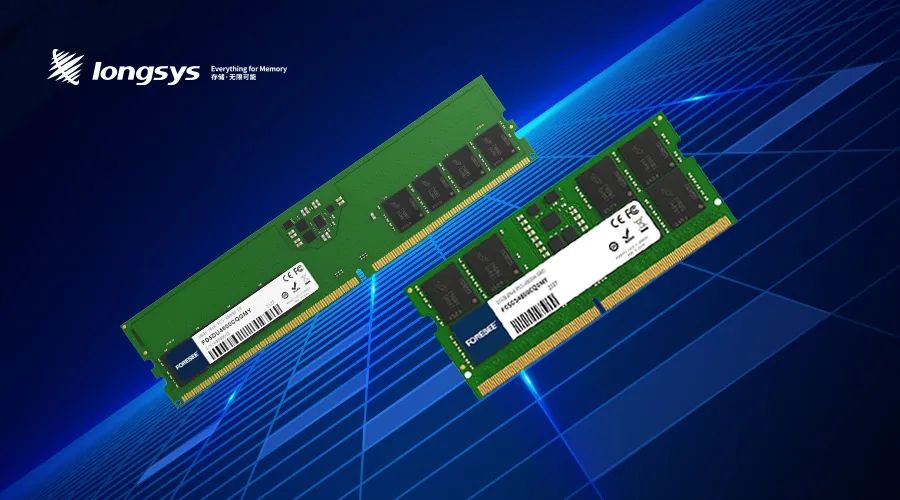商业往事
江波龙电子公众号开设的全新栏目,每月分享几则有趣的商业小故事(中英双语),邀请大家和我们一起透过历史故事,看存储商业。

亚马逊与表面张力
本文总计1296字
预计阅读4分钟
(英文文章在中文文章之后)
杰夫·贝佐斯在1994年创立了亚马逊公司(AMZN),后来公司在1997年5月上市,上市挂牌的价格为18美元。在23年后的今天,亚马逊的股价是1910美元,已经超过了100倍的涨幅。
亚马逊的股票是过去20年中表现最好的,但它也并不是在一夜之间就能获得成功。很长的一段时间里,亚马逊的股价是相对持平的。大约有十年,它并没有真正开始增值。
当杰夫·贝佐斯于1994年开始他的电子商务时,网络购物的环境并不成熟。创业第一周,亚马逊才收到12,000美元的订单,而第二周只有7,000美元。
亚马逊采用持续投资(如建造仓库)的策略,以赢得新的客户并创造更多收入,产生的利润都被用来扩大生意。这是一个令人眼花缭乱的经营方式,有收入,但没有在财务报告上带来利润。因此,投资者必须非常有耐心地等待投资回报。
《巴伦周刊》是一本著名的金融杂志,专门为投资人提供投资报导。早在1999年,巴伦的记者杰奎琳·朵尔特写了一篇关于亚马逊的封面故事,标题为「亚马逊‧炸弹」。在文章中,朵尔特对亚马逊的这种商业模式提出了反对观点,她怀疑亚马逊是否具有在短期内产生利润的能力,还严肃地质疑了亚马逊能否与沃尔玛和巴恩斯等这种传统百货公司产生竞争,因为这些传统百货业者的口袋可比亚马逊深得多。
然而,亚马逊的股价在1999年5月至2019年5月之间上涨了4606%左右,年化报酬率约为22.1%。
从今天来看,我们似乎可以得出结论,朵尔特在「亚马逊‧炸弹」文章中的描述是完全错误的。如果投资者读了她报告并出售亚马逊股票,他们就会错过一个巨大的赚钱机会。
然而事实是,在朵尔特文章发表两年后,亚马逊的股价下跌了95%左右。这意味着,如果投资者以100美元的价格买入亚马逊,价格将跌到只剩5美元。这是跳水式的下跌了。
我们知道,在21世纪初出现了「.com泡沫」。在互联网泡沫期间,纳斯达克科技公司的平均股价下跌了70%左右。然而,亚马逊的股价却下跌了95%,它似乎存在着互联网泡沫之外的问题。
亚马逊急需做一些事情来扭转局面。在互联网泡沫期间,亚马逊进行了许多新的投资,这才是后来其股价上涨的原因。例如,亚马逊在 2002 年投资了亚马逊网络服务(AWS)。
AWS为个人、公司和政府提供数据存储与运算服务。与亚马逊的在线零售业务一样,其 AWS 业务在开始的时候也并不顺利,因为那时的「云服务」还处于初期阶段,微软在四年后才推出类似的Azure云服务,而谷歌的云服务则在五年后才推出。但是,大环境成熟之后,AWS就被认为是云服务的领导者。
一个公司的成功往往离不开良好的产品或服务、强有力的领导或正确的商业战略。然而,如果这些成功因素没有遇上正确的时间,那么它们将不会发挥作用。一些人把亚马逊的成功完全归功于贝佐斯的领导,但事实上,时机在其中起到了重要的作用。我们甚至可以这么说,如果贝佐斯在今天要重新创建亚马逊公司,他也可能不会获得成功。
公司的成长受到行业内一种「表面张力」的影响。当表面张力扩张时,该行业的所有公司——无论好公司或是坏公司——都会同时出现成长,反之亦然。然而,如果一个公司走得太前了,试图超前整个环境,表面张力也会把这个公司拉下来。也许,走得太前的公司所提供的产品或服务,它所需要基础设施尚未完成,或者还需要教育用户如何使用此类产品或服务。因此,成功的企业取决于对的时机。也就是说,一个公司想要成功,必须在条件合适的时候做适当的事。

Company Do the Right Thing at the Right Time
Amazon was founded by Jeff Bezos in 1994 and went public in May of 1997. The IPO price of Amazon (AMZN) was US$18.00. Fast forward 23 years later and Amazon’s stock price was US$1910, well over a 100-fold increase.
Amazon was the best-performing stock during the past 20 years. However, Amazon didn’t get success overnight. The stock was relatively flat for a long time. It didn’t really start to increase in value for about ten years.
When Jeff Bezos started his online business in 1994, the environment for online business wasn’t mature yet. The first week, Amazon only received a total of US$12,000 in orders. For the second week, it received a total of US$7,000 in orders.
Amazon has used a strategy of continually investing in itself (such as to build warehouses) in order to win new customers and generate more revenue. What would have been profits were used to enlarge the business.
This is a dizzying way to run business that brought in revenue but didn’t result in profits on the financial reports. So, investors had to be very patient before they started to see returns.
Barron’s Weekly is a famous professional finance magazine for investors. Back in 1999, a Barron’s reporter, Jacqueline Dohert, wrote a cover story about Amazon entitled “Amazon.bomb.” Dohert argued against this business model, and she doubted that Amazon could generate profits anytime soon. Dohert also seriously questioned whether Amazon could compete with traditional stores like Walmart and Barnes who had much deeper pockets than Amazon.
However, Amazon’s stock price increased around 4606% between May of 1999 and May of 2019. The average yearly return was around 22.1%.
From today’s viewpoint, it seems that we can conclude that the description of “Amazon.bomb” was totally wrong. If investors read the report and sold their Amazon stock, they would have missed a huge opportunity to earn money.
However, the price of Amazon’s stock dropped around 95% within two years after the article was published. That means that, if an investor bought Amazon at US$100.00, the price would have dropped to only US$5.00. That’s a scary drop!
We know that there was a “.com bubble” during the early 2000’s. And the average stock price of NASDAQ technology companies dropped around 70% during the dot-com bubble.” However, Amazon’s stock price dropped 95%, so it appears that Amazon faced problems beyond the dot-com bubble.
Amazon needed to do something to turn things around. Amazon made many new investments during the dot-com bubble which made its stock price increase. For example, Amazon invested in Amazon Web Services (AWS) in 2002.
AWS provided on-demand cloud computing for individuals, companies and governments. As with its retail business, it was not such a smooth beginning for its AWS business, as it was still early days for cloud-based services. For example, Microsoft’s Azure launched four years later, and Google’s Cloud Platform launched five years later. But once the environment matured, AWS was positioned to be the leader in providing web services.
A company’s success usually is the result of good products or service, strong leadership or proper business strategy. However, if these successful factors don’t exist at the right time, then nothing much will become of such success factors. Some people credit Bezos’ leadership for Amazon’s success, but it appears that timing was very important for Amazon’s success. If Bezos were to create Amazon today, he would likely fail.
A company’s growth is affected by a kind of “surface tension” within the industry. When the surface tension increases, all companies in that industry—no matter whether good or bad companies—will experience growth at the same time, and vice-versa. However, a company that tries to provide products or services that surpass the opportunities provided by the environment will be pulled down by the surface tension in its industry. Perhaps, the infrastructure for such products or services isn’t complete yet, or the users need to be educated in how to use such products or services. So, a successful business depends on timing. That is, a company that wants to be successful must make its moves when the conditions are right.


